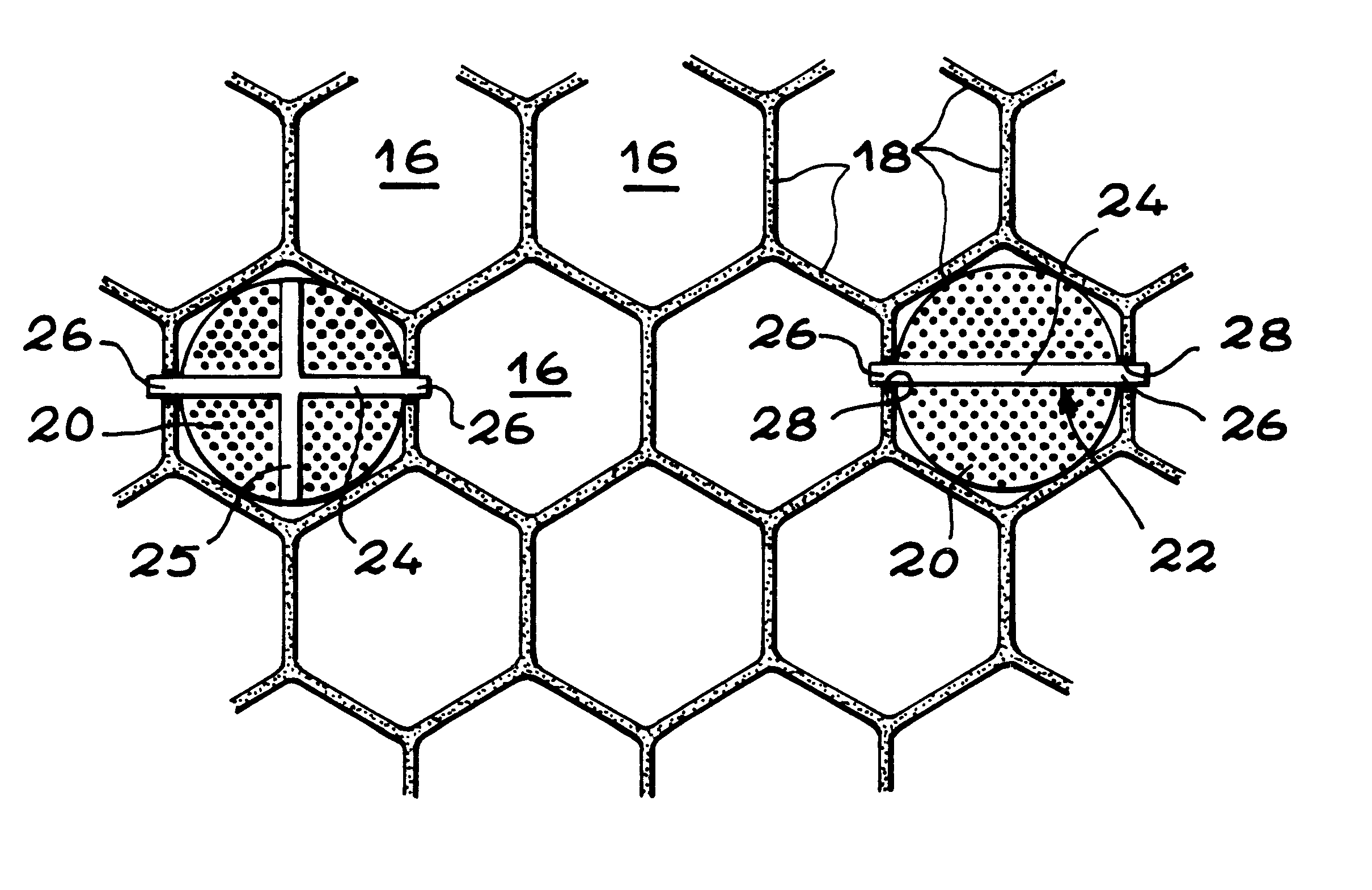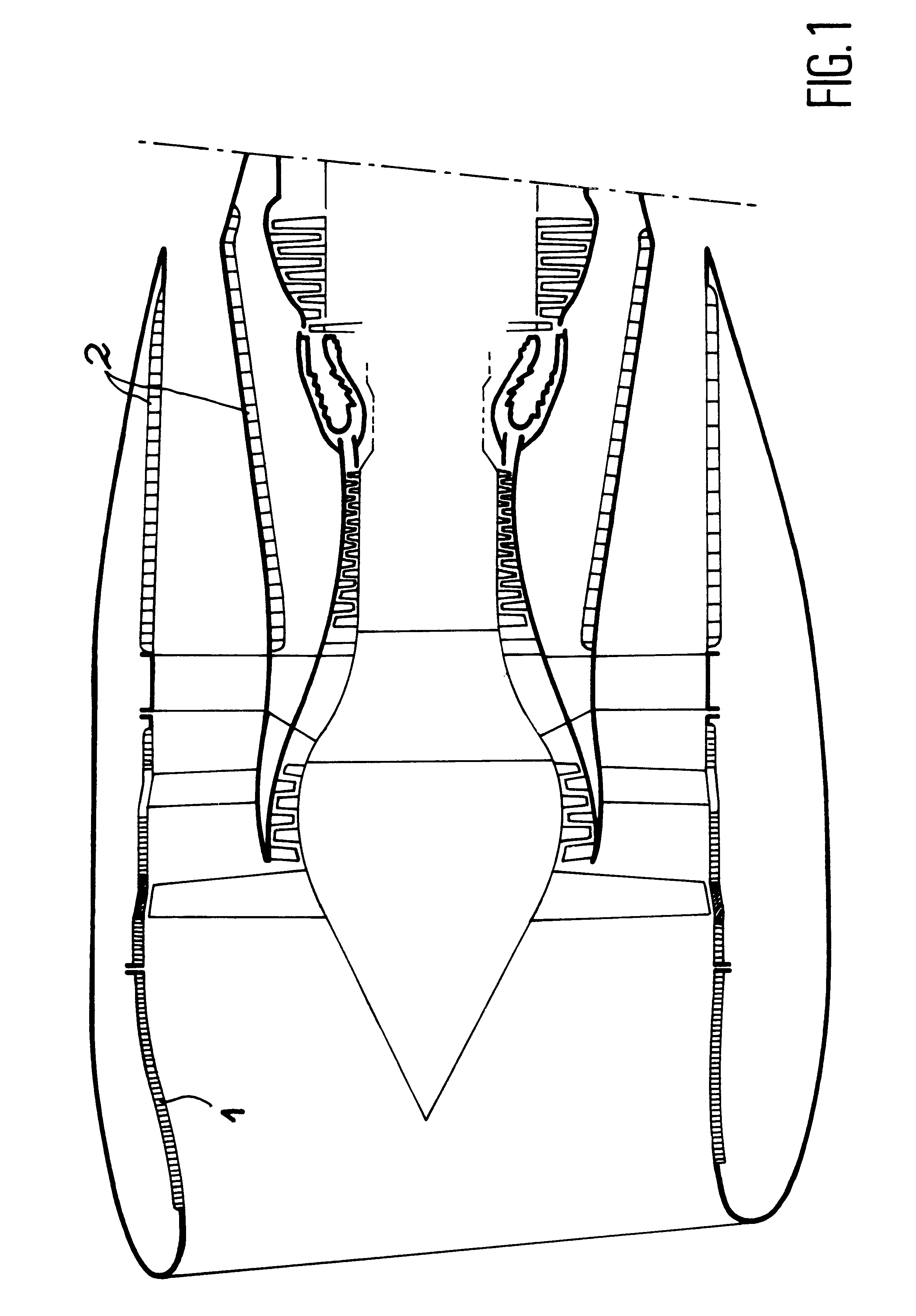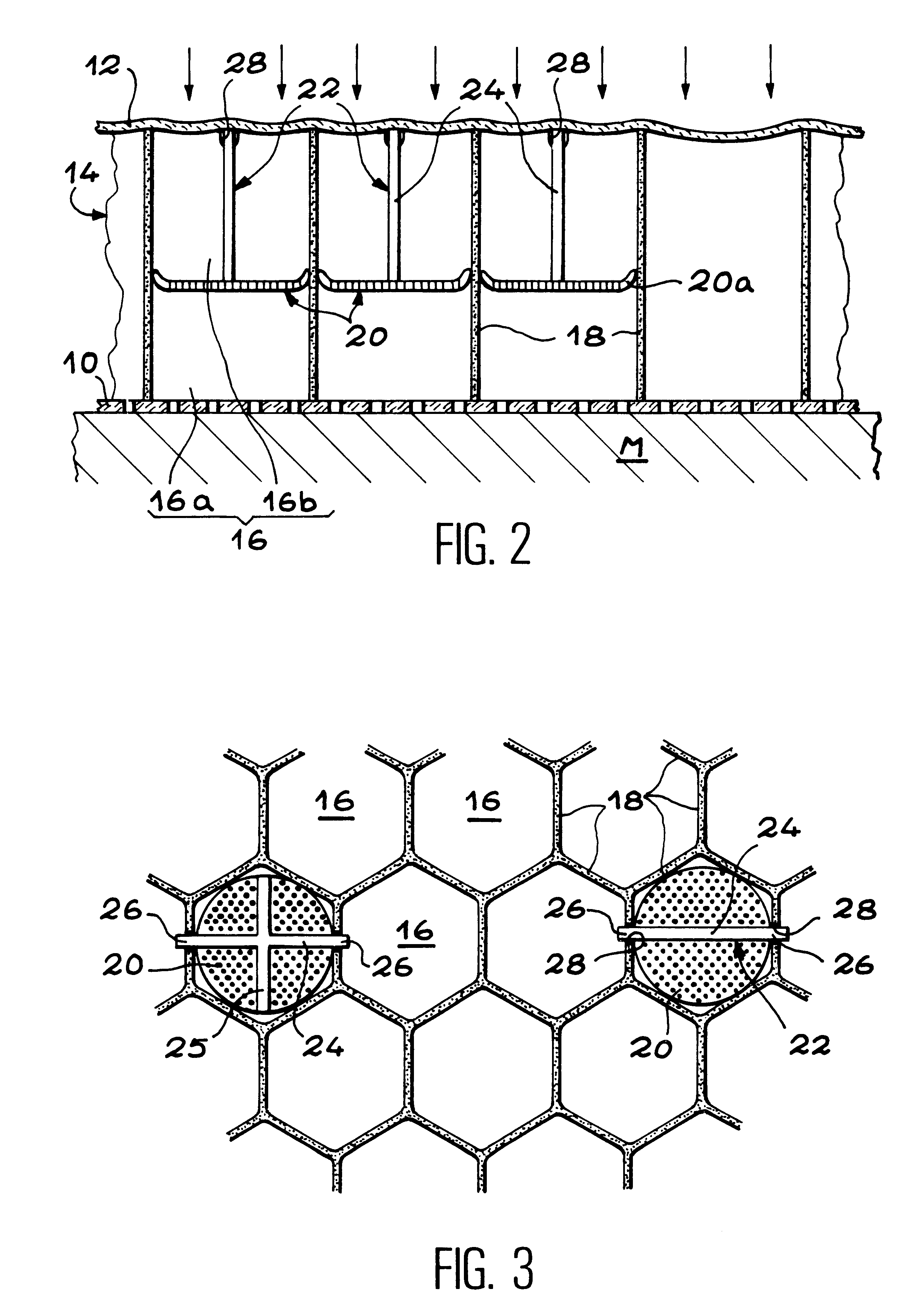Noise reduction sandwich panel, notably for aircraft turbojet engine
a technology of aircraft turbojet engine and sandwich panel, which is applied in the direction of machines/engines, combustion air/fuel air treatment, instruments, etc., can solve the problems of reducing the acoustic reducing the mechanical strength of the panel, and reducing the acoustic performance of the sandwich panel. , to achieve the effect of reducing the acoustic performance, reducing the mechanical strength of the panel, and facilitating mounting
- Summary
- Abstract
- Description
- Claims
- Application Information
AI Technical Summary
Benefits of technology
Problems solved by technology
Method used
Image
Examples
first embodiment
According to the invention, each positioning unit then supports only one separative component.
Each positioning unit may then comprise a small plate, placed between the separative component which it supports and the reflector or the resistive layer, substantially perpendicularly to the latter, said small plate comprising two protruding portions, adjacent to the reflector or to the resistive layer, which are supported in the notches formed in the edges adjacent to the reflector and to the resistive layer of both opposite partitions of the corresponding cells.
Alternatively, each positioning unit may also comprise at least two tabs which extend between the separative component which they support and the reflector or the resistive layer, each tab comprising an end folded between the waffle core and the reflector or the resistive layer.
In this case, advantageously, at least one of the tabs completely crosses a cell adjacent to the one which contains the separative component supported by t...
second embodiment
This second embodiment of the invention is mainly distinguished from the first embodiment described earlier with reference to FIGS. 4 and 4, by the fact that in this case, a same positioning unit 22 supports several separative components 20 inserted in aligned cells 16. More specifically, each positioning unit 22 in this case comprises a plurality of small plates 24 substantially located in a same plane and each bearing a separative component 20. Each positioning unit 22 further comprises a plurality of tabs 26, joining up the small plates 24, two by two, in the extension of the extreme portions of these small plates adjacent to reflector 12.
Because of this configuration, instead of having a length which is just sufficient for reaching a machined notch 28 and being supported by it in one of the partitions 18, each of the tabs 24 in this case crosses a cell 16 throughout its length, as well as two machined notches 28 in the edges adjacent to reflector 12 of both partitions 18 facing ...
PUM
| Property | Measurement | Unit |
|---|---|---|
| width | aaaaa | aaaaa |
| width | aaaaa | aaaaa |
| width | aaaaa | aaaaa |
Abstract
Description
Claims
Application Information
 Login to View More
Login to View More - R&D
- Intellectual Property
- Life Sciences
- Materials
- Tech Scout
- Unparalleled Data Quality
- Higher Quality Content
- 60% Fewer Hallucinations
Browse by: Latest US Patents, China's latest patents, Technical Efficacy Thesaurus, Application Domain, Technology Topic, Popular Technical Reports.
© 2025 PatSnap. All rights reserved.Legal|Privacy policy|Modern Slavery Act Transparency Statement|Sitemap|About US| Contact US: help@patsnap.com



